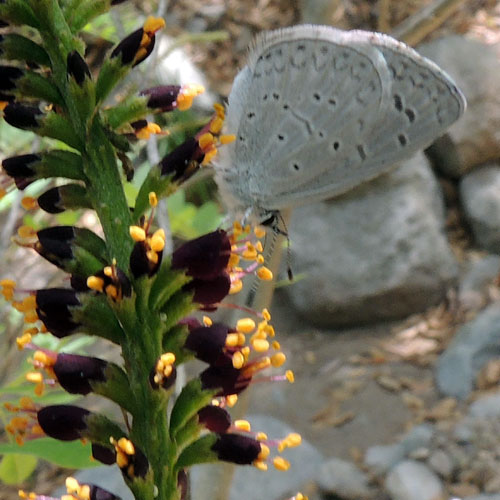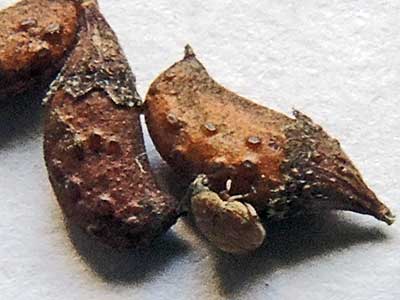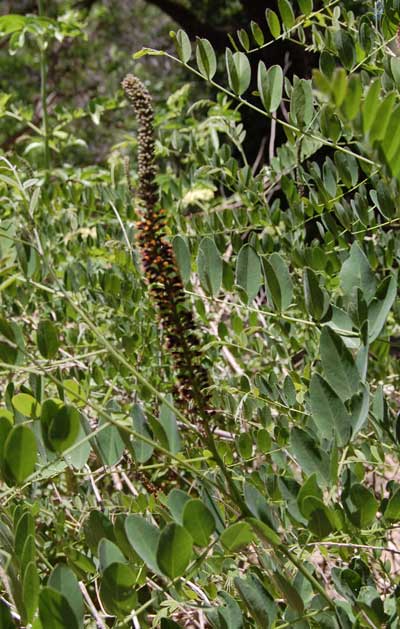False Indigo
Amorpha fruticosa

Photographed along a sycamore-lined canyon on Pinal Peak, Gila Co., Arizona. June 2014. The butterfly is a Southwestern Azure, Celastrina echo.
Sponsored Links:

The bean pods have a warty surface and are each about 3.5mm long. Along side one of the pods is a bean weevil, Acanthoscelides pallidipennis (Bruchidae) which develops by tunneling out a bean.
FLOWERS: Numerous, small, dark purple flowers in a long, dense spike.
Each of the small flowers has ten, conspicuous, yellow-orange stamens and just one
dark purple petal.
LEAVES: Leaves are long-pinnately compound. The formula is odd, i.e.
there is a terminal leaflet in addition to the pairs. Crushed foliage is
malodorous.
SHRUB: Woody shrub with upper portions largely herbaceous. Upright stems
often exceed two meters in height. May
form thickets with many stems arising from ground level.
RANGE: False Indigo occurs sporadically in riparian habitats across
Arizona growing mostly in clearings where there is a good underground water
supply. This plant can also be found in sporadic locations across much of North
America.
FRUIT: Small, indehiscent
bean-pods with just a single bean. Glands dot the surface of the pod and are the source of noxious when touched. The seeds have been found to contain a class
of chemicals known as rotenoids which may have application in treating tumors.
UNARMED
Fabaceae -- Bean Family
More Information:
- Southwest Environmental Information Network
- Missouri Plants
- USDA Plant Profile
- ITIS Taxonomic Report
- Google Images
- Google Scholar Literature Search
Sponsored Link:
